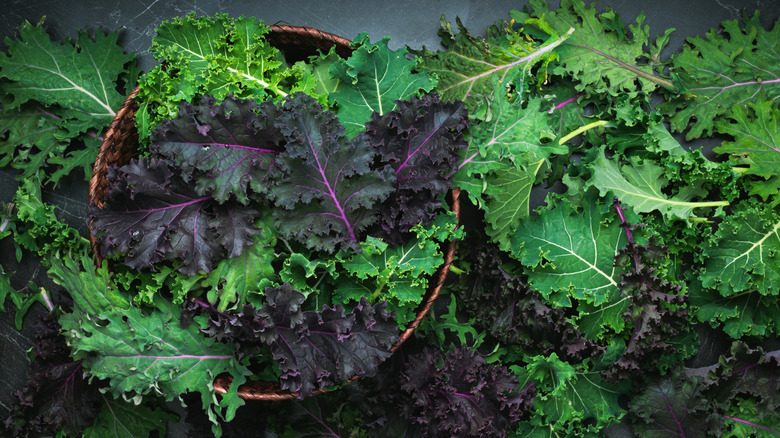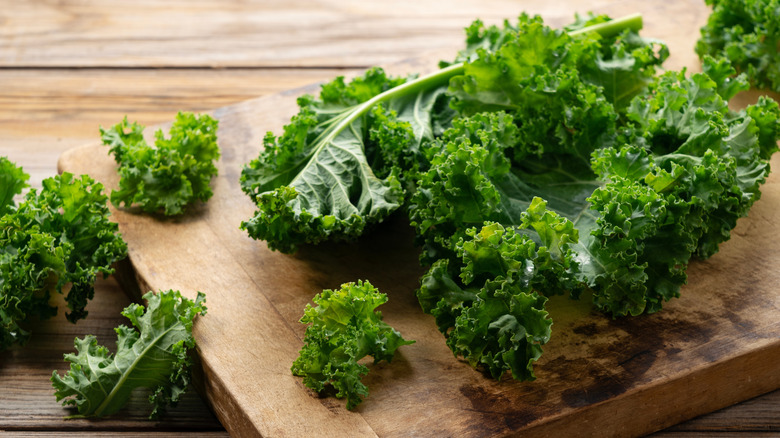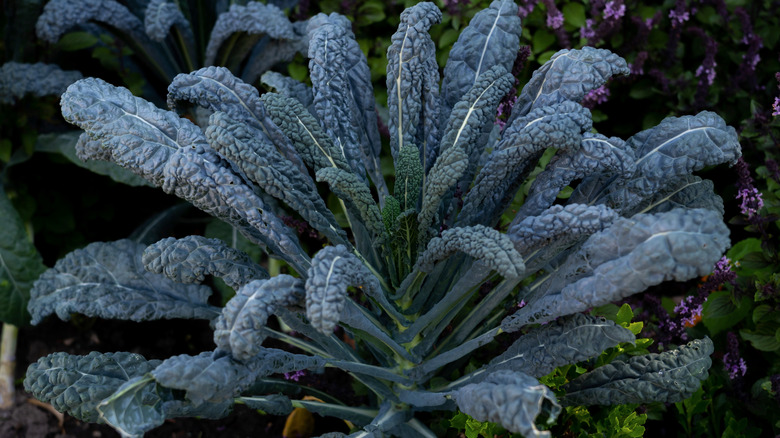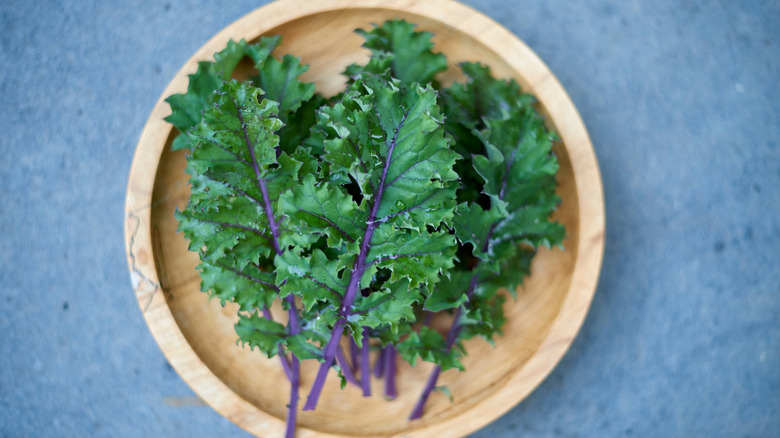The Differences You Should Know Between Curly, Tuscan, And Russian Red Kale
Kale is so much more than a trendy superfood, boring salad base, or wasteful Pizza Hut buffet garnish. It's a wonderfully versatile, flavor-packed vegetable that can play a starring role in a wide variety of delicious dishes, from sandwiches to soups to pizza. What's more, the leafy green brassica comes in many distinct varieties with a wide range of flavor profiles, textures, and use cases. Some are sweet and delicate, perfect for enjoying in raw salads, while others are bitter and fibrous, and ideal for cooking down in a hearty stir fry or stew.
With well over 100 known types of kale and lots of overlapping terminology, determining what kind of kale you're working with (and how best to use it) can be more than a little confusing. To help you out, here's a quick and dirty rundown on the key differences between three very different kale varieties: curly, Tuscan, and Russian red.
Curly kale
Curly kale is the most iconic and widely available variety, at least in the United States. When you think of kale, you probably imagine curly kale's dense, dark green, frilly leaves. Curly kale is known for its earthy, bitter taste and springy, fibrous texture. In fact, curly kale is one of the most bitter kale varieties, so if you think you don't like kale but have only tried the curly kind, you may want to branch out and give some other varieties a try.
While it can be consumed raw in salads or smoothies, many prefer to cook curly kale to tone down its strong flavor and texture. Additionally, its sturdy, tightly packed leaves can soak up -– and stand up to –- lots of delicious sauces and seasonings (especially after a nice little kale massage). Curly kale is the perfect base for anything from a comforting, flavor-packed winter stew to a savory stir fry, and it's also wonderful simply sautéed with your favorite seasonings for a nutrient-rich side dish.
Tuscan kale
Tuscan kale is also known as dinosaur kale, lacinato, or cavolo nero (which translates to black cabbage in Italian). These names allude to its distinctively dark tone and bumpy texture. Tuscan kale has long, flat leaves and more delicate stalks and ribs than curly kale. It has been cultivated in Italy for well over a century and features prominently in traditional Italian cuisine, particularly the famous "cucina povera" of the Tuscany region. Tuscan kale is a staple ingredient in the iconic Italian comfort dish ribollita.
Tuscan kale has become increasingly popular and accessible in the United States in recent years and can now be found in most American supermarkets. With a slightly sweeter flavor than curly kale, Tuscan kale is the perfect base for a hearty salad or stew. It's also ideal for tossing into no-recipe soups and pasta dishes as an easy way to boost nutrients and flavor.
Russian red kale
Russian red kale is known for its tender leaves and mild, nutty flavor. It's one of the sweetest and most delicate varieties of kale, making it a great option for people who think they don't like kale because it's too fibrous and bitter. Russian red kale can easily be tossed into raw salads and smoothies to boost nutrients and flavor. It's also a lovely addition to cooked dishes such as risotto or even as a colorful and nutritious pizza topping.
Russian red kale is a little more obscure than curly and Tuscan, but it's certainly worth seeking out. The pretty, purple-veined brassica can often be found at farmers markets or specialty stores. It's also a favorite of home gardeners thanks to its wintry hardiness and eye-catching magenta tones. Interestingly, Russian red kale usually tastes even sweeter after a frost and its purple veins grow darker in colder weather.



